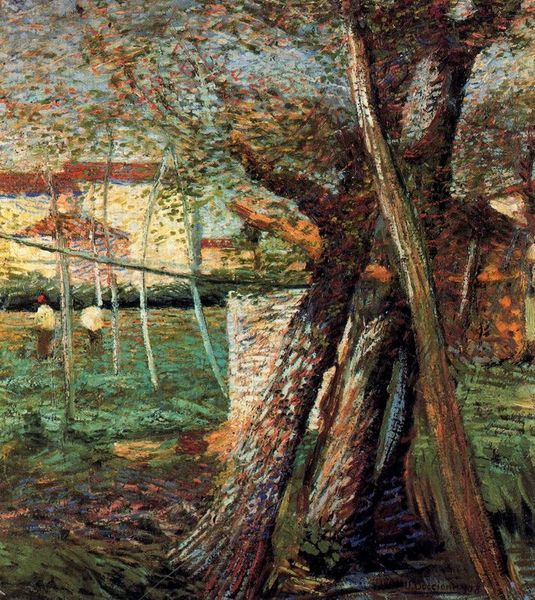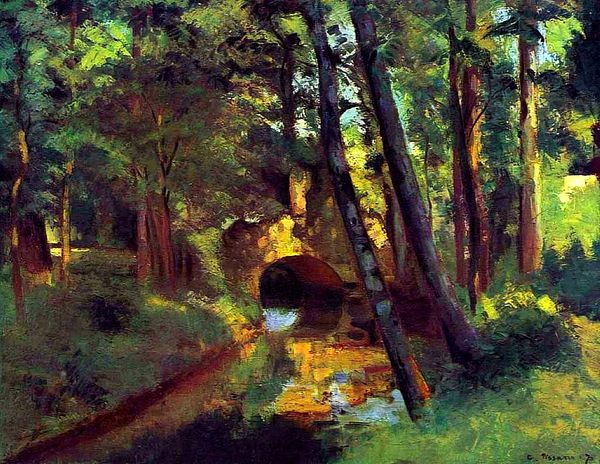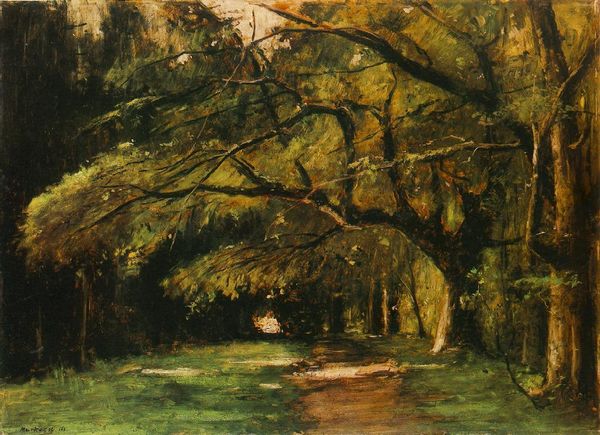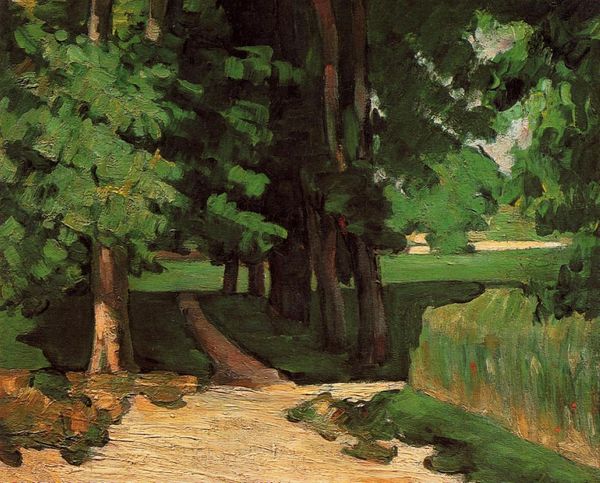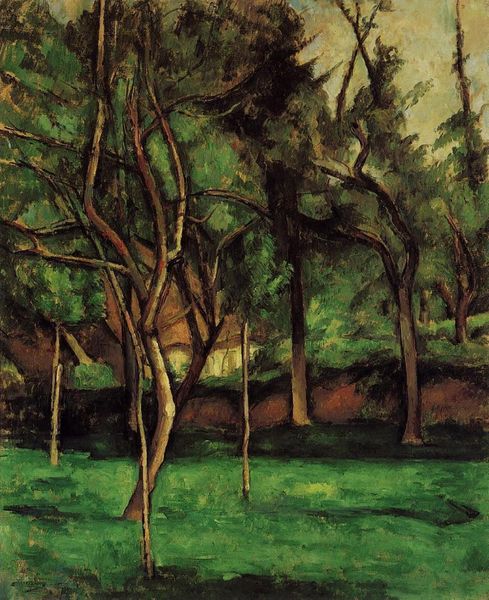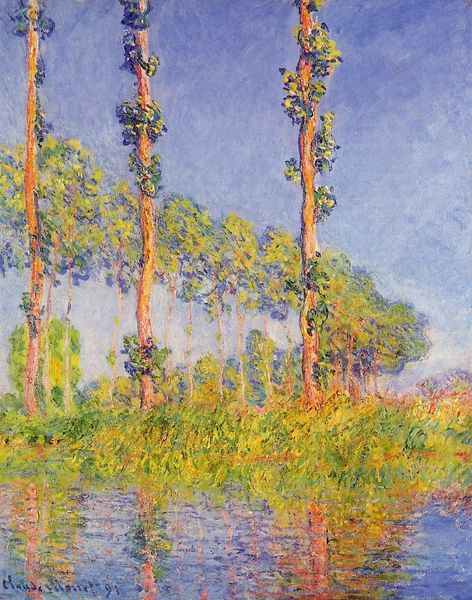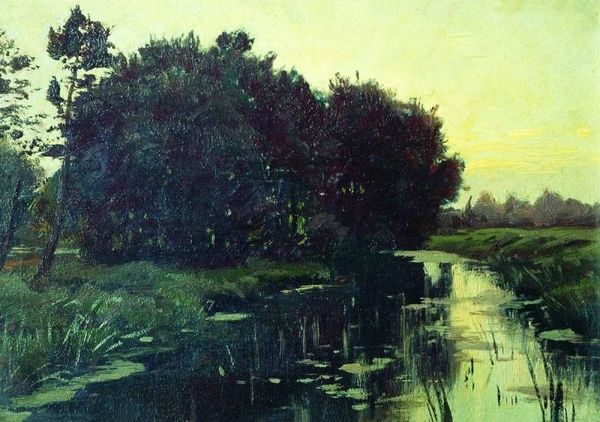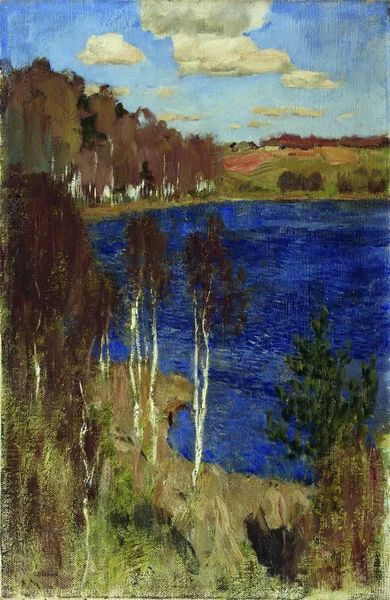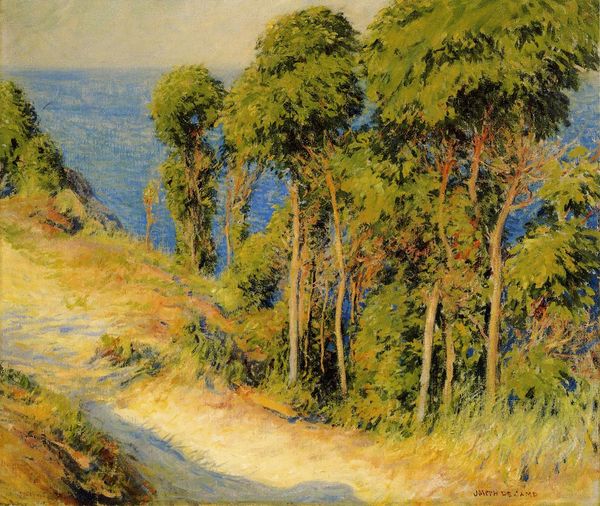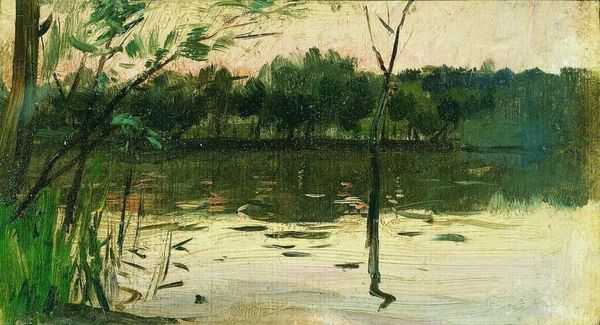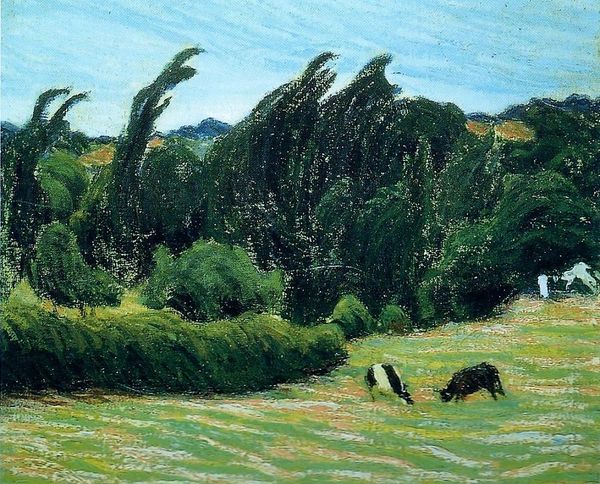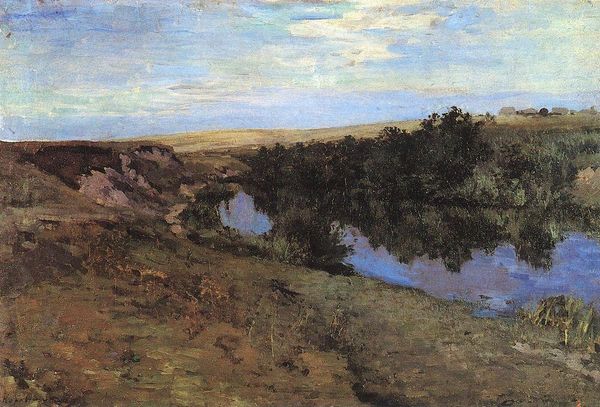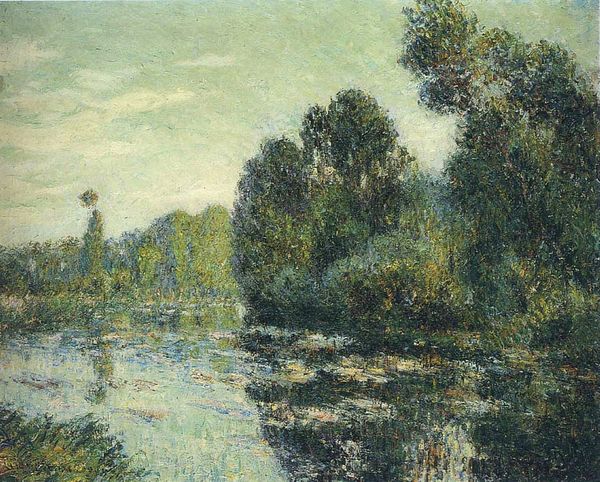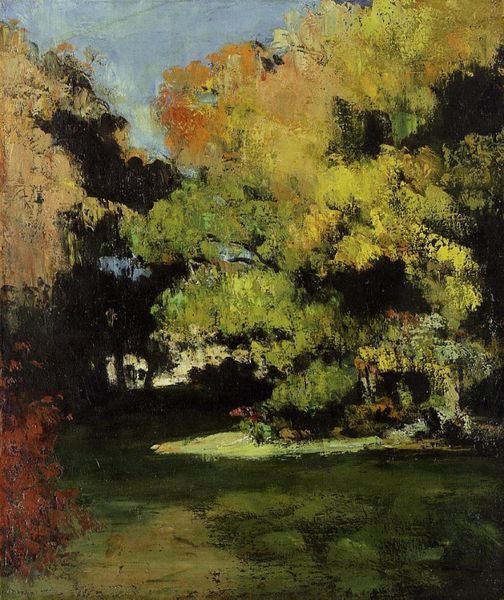
Copyright: Public domain
Editor: Here we have Arkhyp Kuindzhi’s "Forest Swamp," painted in 1908. It's an oil painting, and the texture seems really thick, almost like the paint itself is mimicking the dense foliage. It feels both inviting and slightly menacing, all those greens and browns reflected in the still water. What do you see in this piece, beyond just a pretty landscape? Curator: You’ve nailed that feeling! Kuindzhi, even this late in his career, is playing with our perceptions. Swamps are liminal spaces, aren’t they? Neither land nor water, beautiful yet breeding grounds for… well, less beautiful things. Notice how the bright sky is framed? It suggests an opening, an escape, but the eye is held captive by the density on either side, those assertive verticals and bold colors. The sky is a lure, like those impressionist pops, those visible strokes which seem to reflect light to illuminate that inviting but dangerous pathway. I wonder, what does that suggest to you? Editor: It's interesting you call it inviting and dangerous, because now that you point it out, I do feel that too! It seems almost contradictory – do you think it is suggesting our own, perhaps, contradictory response to nature? Curator: Precisely! There is nothing truly paradisical about mother earth. Think of this, consider its cultural context: Kuindzhi, although born into poverty and strife, ultimately become independently wealthy due to the sales of his artistic prowess and academic service. Even if, late in his career, Kuindzhi began working alone, it might be nice to wonder that a part of the painter, perhaps, continued to search. What have you gleaned? Editor: I’m starting to see this not just as a pretty landscape, but also as something that reflects the tension, that perhaps existed internally. Thank you. Curator: My pleasure. Art isn’t about answers, only better questions, don’t you think?
Comments
No comments
Be the first to comment and join the conversation on the ultimate creative platform.
